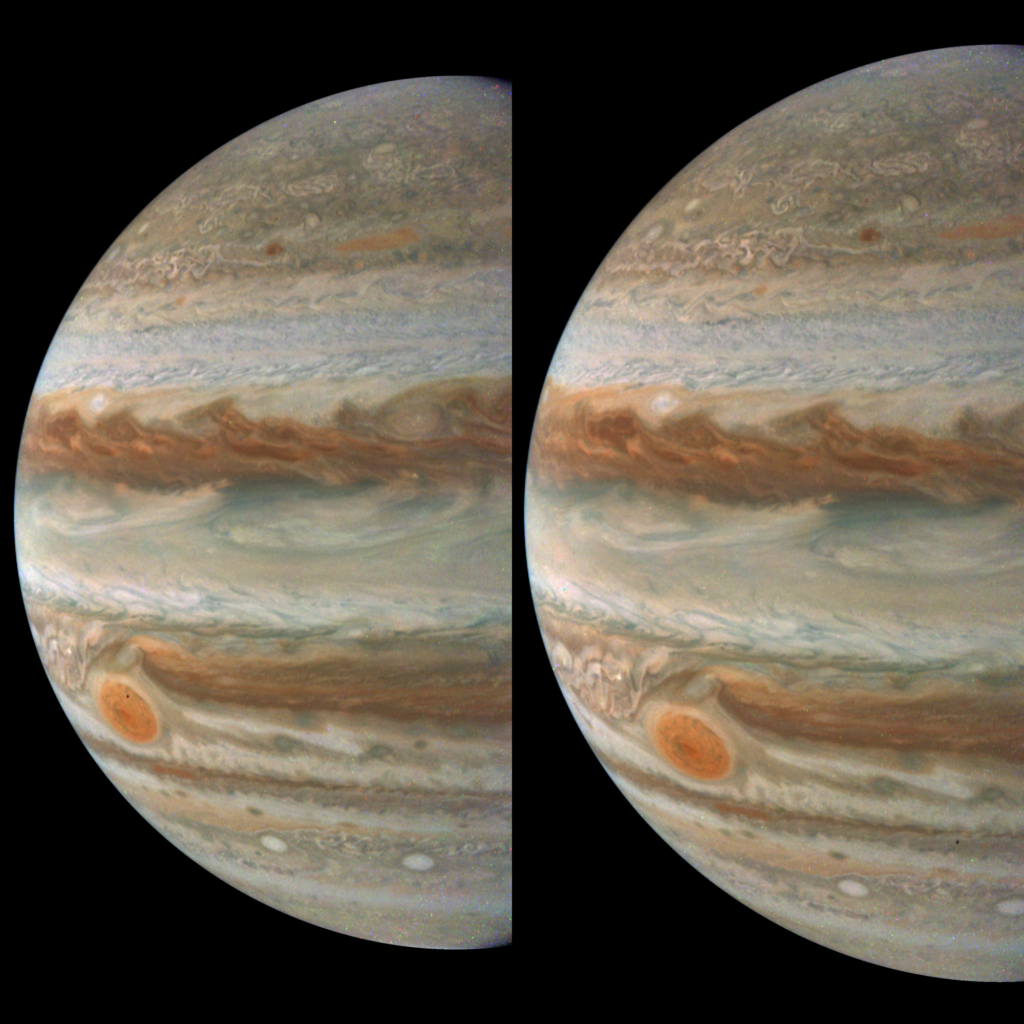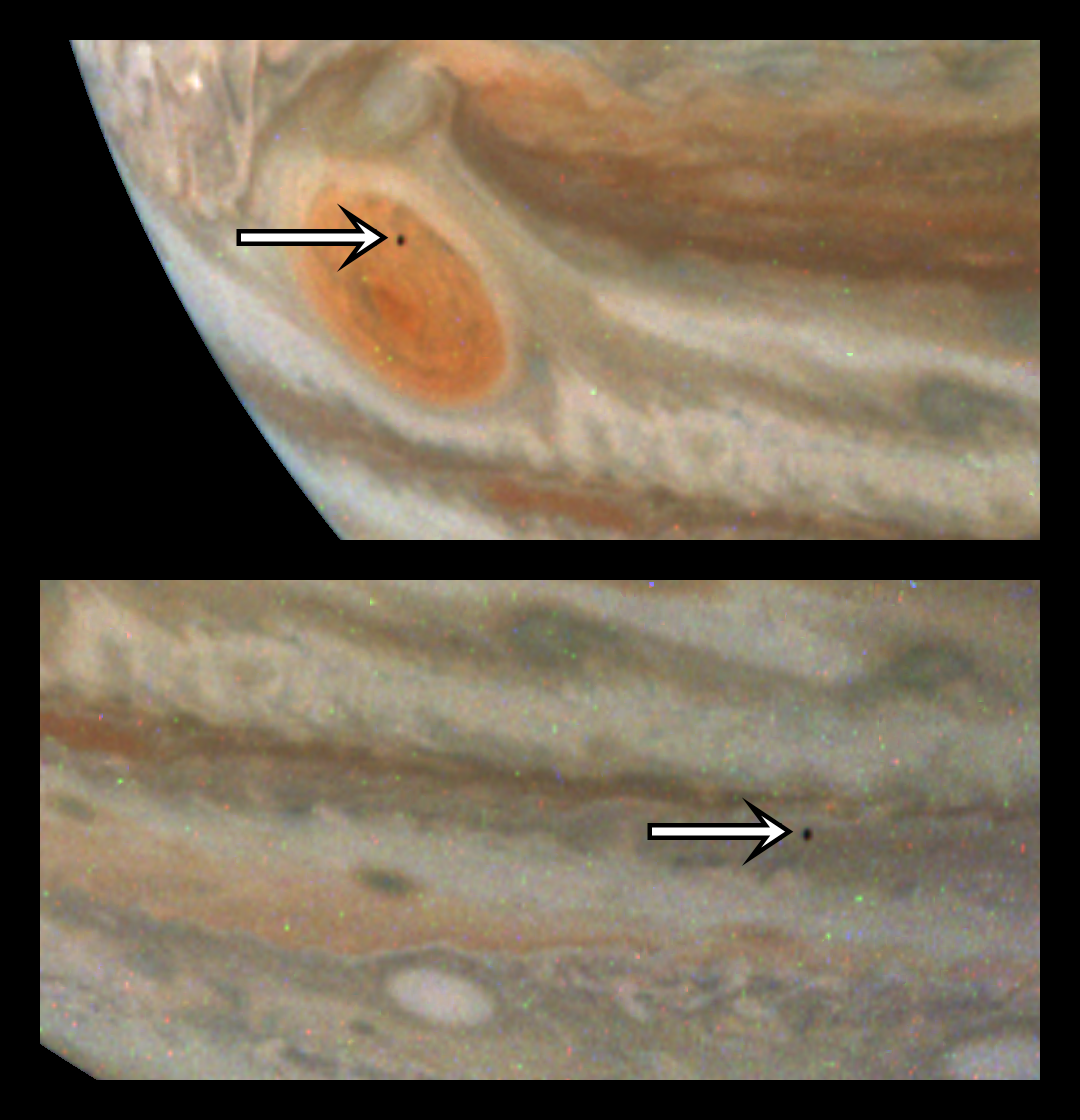On March 7, 2024, the Juno spacecraft approached Jupiter for the 59th time, taking a series of images of the giant planet. Colorful gas belts and giant storms, including the famous Great Red Spot, are clearly visible on them. Upon closer observation, something curious can be seen against their background: a small dark dot. This is Amalthea.

Amalthea is the fifth largest moon of Jupiter. It has an irregular shape. Its dimensions are 250 × 146 × 128 km, with the long axis always pointing at Jupiter, and the short axis perpendicular to the plane of the orbit.

The moon is heavily cratered, while the size of some craters is comparable to the size of Amalthea. It orbits Jupiter inside the orbit of Io, the innermost of the planet’s four largest moons, and takes 0.498 Earth days per orbit.
One of the distinctive features of Amalthea is that it is one of the reddest objects in the Solar System. In terms of saturation, it is ahead even of Mars. The origin of this Amalthea’s color remains unclear. According to one version, sulfur emitted by Io volcanoes may settle on it. According to another, it received its color as a result of interaction with charged particles from the magnetosphere of Jupiter.
Another interesting fact is that Amalthea emits more heat than it receives from the Sun. This may be due to the fact that when orbiting in Jupiter’s powerful magnetic field, electric currents are induced in its core. In addition, heat can be released due to tidal interactions with Jupiter.
Due to the tidal influence of Jupiter, centrifugal force, as well as the low density and strong elongation of Amalthea, the escape velocity in some of its sections does not exceed a meter per second. As a result, the dust dislodged by the impacts of micrometeorites easily leaves the surface of the moon and forms one of Jupiter’s rings — the so-called Amalthea web ring.
According to https://www.nasa.gov
Follow us on Twitter to get the most interesting space news in time
https://twitter.com/ust_magazine


